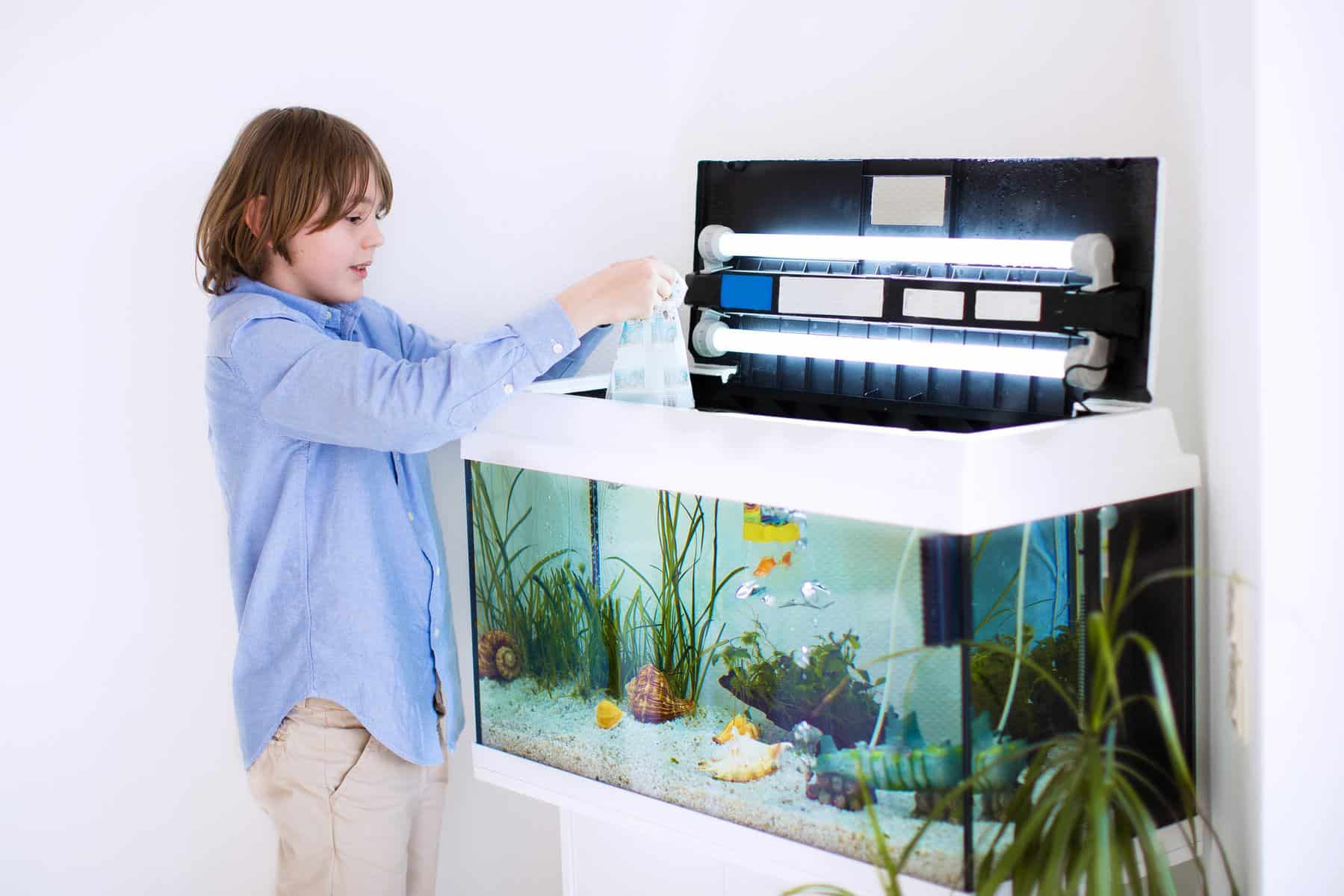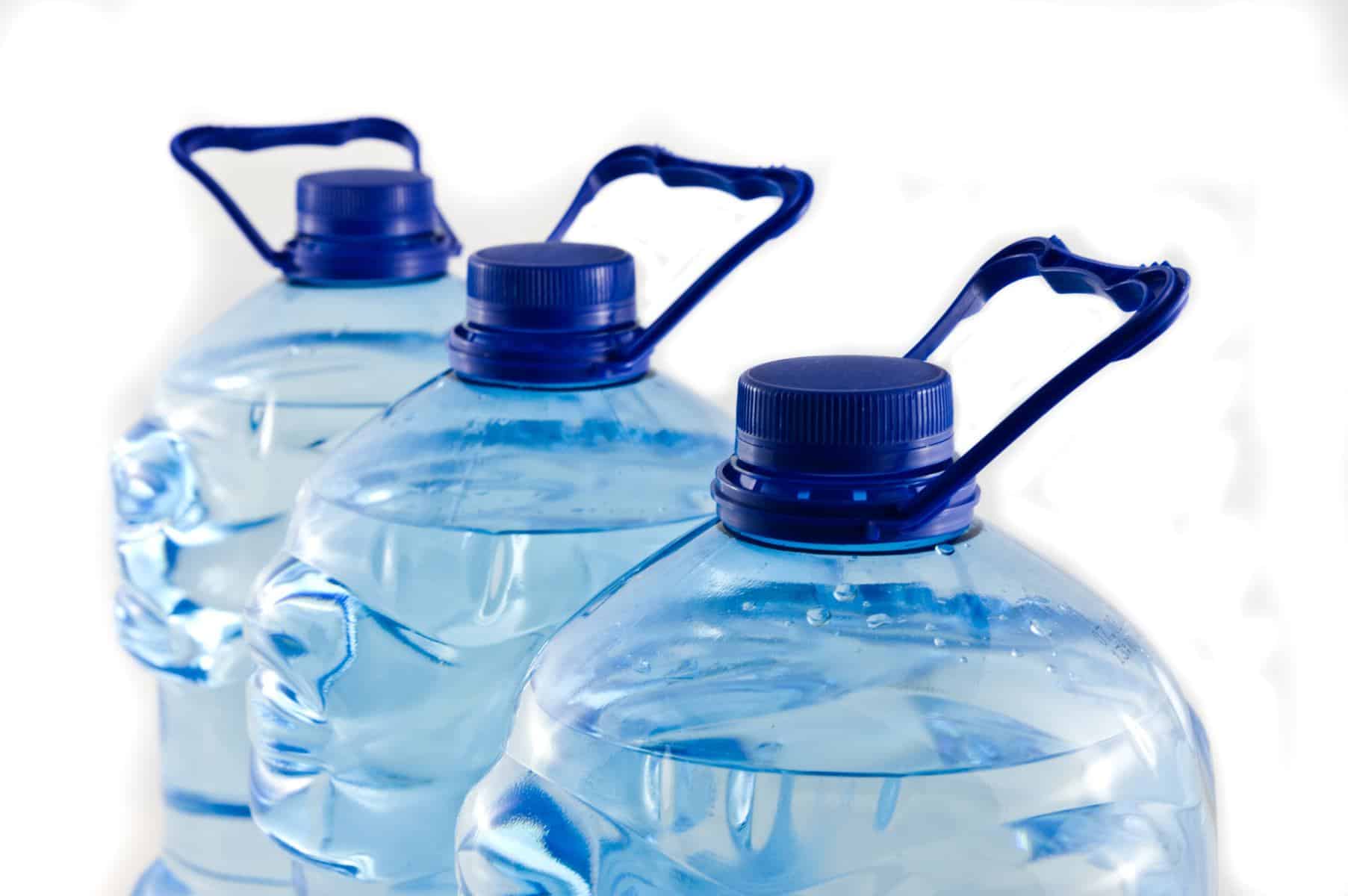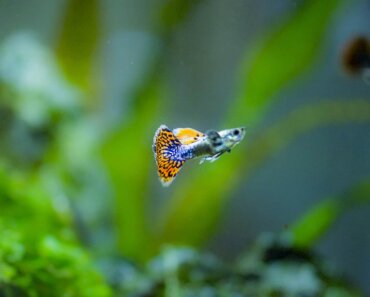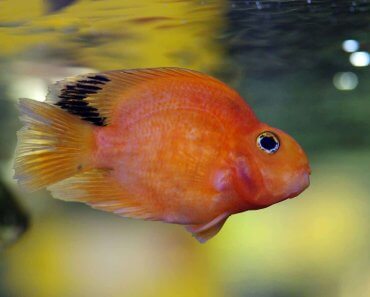If you’re a beginner, you might not be fully aware of all the different types of aquarium water out there and how each one affects your fish tank differently. Good water chemistry is the basis for a healthy aquarium system, whether it be freshwater or saltwater.
The main water options available for fish tank systems are tap water, well water, bottled water, reverse osmosis (RO) water, reverse osmosis deionized (RO/DI) water, and lastly, distilled water. This article will specifically discuss how using distilled water impacts your aquarium.
Keep reading to find out everything you need to know about the different types of tank water available as well as how and when to use distilled water in your own freshwater or saltwater fish tank!
What is distilled water?
Distilled water is water that has been processed to remove certain impurities through a heating and cooling process. Distillation of water requires the water to first be boiled. The steam that is produced is then cooled and collected, resulting in more purified water. However, while distillation removes many impurities, it does not remove those that have a lower boiling point than water; this means that some undesirable particles may still be present in the distilled water.
This process attempts to mimic the natural events of evaporation, condensation, and precipitation.
How is distilled water different from tap water?
There are a few major differences between distilled water and tap water, the main one concerning nutrients and minerals.
The quality of your tap water depends on where you live. Tap water is pulled from reservoirs that are constantly influenced by weather patterns, runoff, and geological composition; important water parameters, like the pH levels and water hardness, can greatly differ across locations based on daily inputs and outputs.
Tap water is treated in facilities to mainly filter and neutralize foreign particles, bacteria, viruses, parasites, and other chemicals; these facilities often add chlorine or chloramine to best preserve the water and kill off any remaining pathogens. However, this process allows many elements, nutrients/minerals, metals, and other ‘fish tank impurities’ to remain in high contents.
In comparison, distilled water removes most of these other impurities, as long as they can be naturally boiled out. This means that the most dangerous heavy metals that pose a threat to your fish tank, like lead and mercury, can be filtered out.
However, this also means that many beneficial nutrients and minerals, like magnesium, calcium, and phosphate, also get filtered out in the process. For many tanks, these minerals and nutrients are critical for fish, invertebrates, and plants, to sustain cell processes.
Usually, hobbyists will test these parameters individually and as total dissolved solids (TDS) for the best reading of their fish tank as a whole. Total dissolved solids measure all inorganic and organic substances in the fish tank water and are recorded in parts per million (ppm). TDS are important for the aquarium because it indicates the available resources for fish, plants, and invertebrates; it is also an important parameter to consider if wanting to change pH, water hardness (GH), or carbonate hardness (KH).
Tap water vs. distilled water in freshwater fish tanks
In general, freshwater planted tanks especially need those natural minerals found in tap water to photosynthesize; shrimp and other invertebrates also require these minerals to molt and grow correctly. If hobbyists plan to use distilled water in their freshwater fish tank, then they usually need to use other products to remineralize the water and to adjust TDS and water hardness accordingly. While this gives more control over nutrient input and output, it can become expensive and can be difficult to gauge at first.
This is in contrast to using a source of tap water that already has minerals and other important nutrients. However, these levels may still be insufficient or in excess, and might still need to be adjusted in order to make the water safe for your fish, plants, and invertebrates.
Tap water vs. distilled water in saltwater fish tanks

Saltwater fish tank water parameters usually need to be a little more exact than freshwater parameters, especially when keeping a reef system. Many hobbyists try not to use tap water in saltwater aquarium systems because of all the unknown nutrients and minerals that can easily be introduced.
The most important parameters in saltwater, besides salinity, are typically pH, carbonate hardness, nitrates, phosphates, and calcium. The problem with using tap water for saltwater fish tanks is that these levels can easily fluctuate every day which can create instability; most tap water is also known for containing more phosphates than desirable, which can quickly lead to algae problems.
On top of this, tap water has been known to introduce other major impurities, such as lead from pipes, which can quickly devastate a marine aquarium. Because of this, most reefers and saltwater fishkeepers like to have as much control over their nutrient levels as possible and choose another more reliable source of water, like distilled water, reverse osmosis water, or reverse osmosis deionized water.
How is distilled water different from reverse osmosis water?
Another common option for fish tank water is reverse osmosis (RO) water or reverse osmosis deionized (RO/DI) water. There are a few differences between the two, so it’s important to know which is best to use for your own tank as these water systems can be expensive to install and maintain.
Reverse osmosis (RO) water
Reverse osmosis removes similar particles to distillation but uses a semi-permeable membrane to filter out molecules and other particles that are larger than water (H2O), like metals and some minerals/nutrients. At the end of this process, you are left with safe and pure water that has very low GH, KH, and overall TDS.
For both freshwater and saltwater fish tanks, reverse osmosis is commonly used as it can be adjusted to specific nutrient levels just as distilled water can. Reverse osmosis water tends to be used by hobbyists who plan on having their tank for a long time; this is because it is usually cheaper to purchase and install a four-stage reverse osmosis system and keep up with membrane replacements than it is to constantly purchase distilled water.
Reverse osmosis deionized (RO/DI) water
RO/DI water is similar to regular RO water and works on a semi-permeable membrane as well, but undergoes the additional step of deionization; this step results in even purer water with zero TDS. RO/DI systems are usually five or six stage systems.
In short, the deionization stage uses positive and negative charges to remove any lasting ions that have been able to pass through the previous stages of the system. Many hobbyists believe that RO/DI systems are essential for the success of reef tanks and that it is more than worthwhile to purchase one if you’re planning on getting the best water for your dollar. However, just like if you use distilled water or RO water, you will still need to add minerals to make the water safe for your fish, plants, and invertebrates.
Is RO water or RO/DI water better?
As you’ve probably heard, bigger is usually better in the fish tank-keeping hobby; for the most part, this is also true when it comes to aquarium equipment. If you’re putting out the money and doing all the plumbing for a RO system, you may as well spend the extra money for a full RO/DI system.
Technically, RO/DI water is much purer than RO because of the additional deionizing step, but for the average fish tank, both make safe and ready-to-use water for fish.
When should you use distilled water in the aquarium?
With all the different kinds of water available for your fish tank that all seem to do similar things, how do you know if you should use distilled water for your aquarium or something else instead?
By using distilled water, you don’t have to worry about introducing undesirable nutrients or any other metals/chemicals into the tank that might not make it safe for fish. However, this means that distilled water is stripped of most of the essential minerals needed for many fish, plants, and invertebrates to undergo certain cell processes, and it will probably be necessary to add back what has been taken out.
How to use distilled water
Many freshwater hobbyists like to mix distilled water with tap water or spring water in order to decrease the number of TDS being introduced into the tank while still keeping a baseline reading. Freshwater fish tanks can either be topped off for evaporation with this distilled water/tap water mix or used to perform a water change entirely. However, if your tap water is not the best water for fish-use, then you will need to remineralize the water, which may then be worthwhile to invest in a RO system.
Likewise, many saltwater fish tank-keepers also use distilled water for top-offs as well as to perform entire water changes; the main difference for saltwater fish tanks though, is that only freshwater is added during top-offs while in water changes, water needs to be mixed with salt to match salinities. This means that a top-off with purely distilled water will not introduce or replace the essential minerals in the tank, but the water change water will as the minerals and nutrients come from the salt mix instead.
As mentioned before, most serious saltwater fish tank-keepers eventually invest in an RO system as it’s the best way to keep aquarium water safe for fish, the most adjustable, and the most inexpensive way to perform fish tank maintenance in the long run.
For any type of water, be it tap water, spring water, distilled water, RO or RO/DI water, or any other purified water, it is always important to have a way to remove chlorine regardless; even the best filtration systems may not filter out the chlorine that is typically added as a protective measure during treatment. All you need to do is add some water conditioner to your fish tank, and it should be fine!
Should you use distilled water for your betta fish?

Again, distilled water lacks many of the essentials minerals needed by fish, plants, and invertebrates for many bodily functions. This means that you would need to add nutrients back into the water, even if for a betta fish.
Many pet stores carry specialized purified water formulated for betta fish tank use, though mixing distilled water and tap water should be safe for your fish as well.
For a full guide on setting up your first betta fish tank, make sure to check out our ultimate betta guide here.
Conclusion
The type of water you use for your aquarium largely depends on the plans you have for the fish tank. Most importantly, you want to ensure that you create a safe environment for your fish, plants, and invertebrates. However, distilled water alone is usually not the absolute best water that you can use for your freshwater or saltwater tank.
Most times, you will need to remineralize distilled, RO or RO/DI water to add back the minerals and nutrients that were taken out; this can be done by mixing mineralized water with a type of purified water, or purchasing a remineralizer separately.
If you have any questions about distilled water, how distilled water affects fish, or have had success with a particular type of water in your aquarium, don’t hesitate to leave a comment below!


























